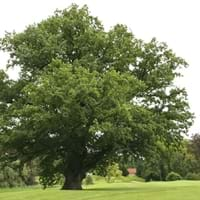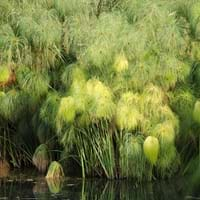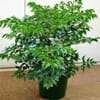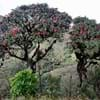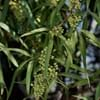Life Span
Perennial
Perennial
Origin
Europe, Eastern Europe, Northern Europe, Southern Europe, Western Europe, Russia/Siberia, Northern Africa, Western Asia
Africa
Types
Not Available
C. papyrus, C. papyrus 'Nanus
Number of Varieties
Not Available
Habitat
Open Forest, open Woodlands, Temperate Regions
Lakes, Shores of rivers or lakes, sluggish streams and rivers, Swamps
USDA Hardiness Zone
3-8
7-11
Sunset Zone
A2, A3, 1a, 1b, 2a, 2b, 3a, 3b, 4, 5, 6, 7, 8, 9, 10, 11, 12, 14, 15, 16, 17, 18, 19, 20, 21
H1, H2, 16, 17, 23, 24
Habit
Oval or Rounded
Clump-Forming
Flower Color
Red, Light Green
Tan
Flower Color Modifier
Bicolor
Bicolor
Leaf Color in Spring
Green, Light Green
Green, Light Green
Leaf Color in Summer
Dark Green
Green, Light Green
Leaf Color in Fall
Yellow, Brown
Green, Light Green
Leaf Color in Winter
Not Available
Green, Light Green
Leaf Shape
Lobed
Grass like
Plant Season
Spring, Summer, Fall
Spring, Summer, Fall, Winter
Sunlight
Full Sun, Partial Sun
Full Sun, Partial Sun
Type of Soil
Clay, Loam, Sand
Clay, Loam, Sand
The pH of Soil
Acidic, Neutral, Alkaline
Neutral
Soil Drainage
Average
Poorly Drained
Bloom Time
Spring, Late Spring
Indeterminate
Tolerances
Pollution, Drought
Drought
Where to Plant?
Ground
Container, Ground, Pot
How to Plant?
Seedlings, Stem Planting, Transplanting
Stem Planting
Plant Maintenance
Medium
Medium
Watering Requirements
Average Water Needs, Do Not over Water, Keep ground moist, Never Over-water, Requires watering in the growing season, Water less during winter
Average Water Needs, Keep ground moist, Requires a lot of watering
In Summer
Lots of watering
Lots of watering
In Spring
Moderate
Moderate
In Winter
Average Water
Average Water
Soil pH
Acidic, Neutral, Alkaline
Neutral
Soil Type
Clay, Loam, Sand
Clay, Loam, Sand
Soil Drainage Capacity
Average
Poorly Drained
Sun Exposure
Full Sun, Partial Sun
Full Sun, Partial Sun
Pruning
Remove damaged leaves, Remove dead branches, Remove dead leaves
Remove damaged leaves, Remove dead branches, Remove dead leaves
Fertilizers
fertilize in growing season
All-Purpose Liquid Fertilizer
Pests and Diseases
Decline, Powdery mildew, Spider mites
fungus
Plant Tolerance
Drought, Salt
Drought
Flowers
Insignificant
Showy
Flower Petal Number
Not Available
Single
Foliage Texture
Coarse
Not Available
Foliage Sheen
Glossy
Glossy
Attracts
Birds
Flying insects, Hummingbirds
Allergy
no allergic reactions
Not Available
Aesthetic Uses
Landscape Designing
Showy Purposes
Beauty Benefits
Not Available
Not Available
Edible Uses
Yes
Insignificant
Environmental Uses
Absorbs greenhouse gases, Air purification, Amazing growth rate, Food for birds, Food for insects, Nesting sites for birds, Prevent Soil Erosion, Shadow Tree
Air purification
Medicinal Uses
Nutrients
Cancer, Heals minor burns, Wounds
Part of Plant Used
Bark, Seeds, Stem, Tree trunks
Stem
Other Uses
Economic Purpose, Used in construction, Used in pulpwood and lumber production
Constructing Boats, Used as fuel, Used in paper industry
Used As Indoor Plant
No
Yes
Used As Outdoor Plant
Yes
Yes
Garden Design
Feature Plant, Shade Trees
Bog Garden, Container, Feature Plant, Houseplant, Mixed Border, Water Gardens
Botanical Name
QUERCUS robur
CYPERUS 'Wild Spike'
Common Name
English Oak
Papyrus, Wild Spike Cyperus
In Hindi
अंग्रेजी ओक
पेपिरस संयंत्र
In German
Englisch Oak
ägyptischen Papyrus-Pflanze
In French
Chêne pédonculé
Papyrus égyptien
In Spanish
Inglés Roble
Papiro egipcio
In Greek
Αγγλικά Oak
αιγυπτιακό πάπυρο
In Portuguese
Αγγλικά Oak
Papiro egípcio
In Polish
dąb szypułkowy
Papiro egipcio
In Latin
Oak Łacina
CHARTA
Phylum
Magnoliophyta
Magnoliophyta
Class
Magnoliopsida
Agaricomycetes
Family
Fagaceae
Cyperaceae
Clade
Angiosperms, Eudicots, Rosids
Angiosperms, Commelinids, Monocots
Tribe
Not Available
Cariceae
Subfamily
Not Available
Cyperoideae
Number of Species
Not Available
Not Available
Season and Care of English Oak and Egyptian Papyrus
Season and care of English Oak and Egyptian Papyrus is important to know. While considering everything about English Oak and Egyptian Papyrus Care, growing season is an essential factor. English Oak season is Spring, Summer and Fall and Egyptian Papyrus season is Spring, Summer and Fall. The type of soil for English Oak is Clay, Loam, Sand and for Egyptian Papyrus is Clay, Loam, Sand while the PH of soil for English Oak is Acidic, Neutral, Alkaline and for Egyptian Papyrus is Neutral.
English Oak and Egyptian Papyrus Physical Information
English Oak and Egyptian Papyrus physical information is very important for comparison. English Oak height is 1,520.00 cm and width 1,830.00 cm whereas Egyptian Papyrus height is 60.00 cm and width 60.00 cm. The color specification of English Oak and Egyptian Papyrus are as follows:
English Oak flower color: Red and Light Green
English Oak leaf color: Green and Light Green
Egyptian Papyrus flower color: Tan
- Egyptian Papyrus leaf color: Green and Light Green
Care of English Oak and Egyptian Papyrus
Care of English Oak and Egyptian Papyrus include pruning, fertilizers, watering etc. English Oak pruning is done Remove damaged leaves, Remove dead branches and Remove dead leaves and Egyptian Papyrus pruning is done Remove damaged leaves, Remove dead branches and Remove dead leaves. In summer English Oak needs Lots of watering and in winter, it needs Average Water. Whereas, in summer Egyptian Papyrus needs Lots of watering and in winter, it needs Average Water.
